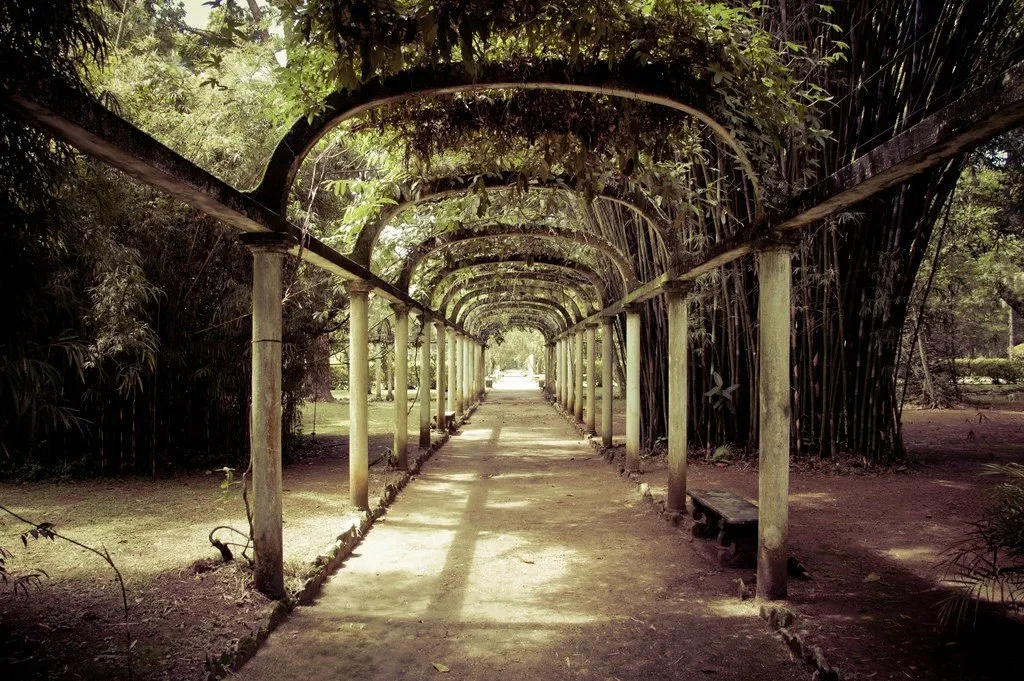The Rio de Janeiro Botanical Garden is a picturesque park and one of the decorations of the Brazilian city. The green area of 140 hectares presents rich collections of the flora of Brazil and other countries of the world. More than 6,000 species of tropical and subtropical plants are grown here. It is noteworthy that only 40% of the territory of the garden is cultivated, and the rest of the territory consists of a natural Atlantic forest. Since 1992, the natural attraction of Rio de Janeiro has received the status of a UNESCO Biosphere Reserve.
 |
| Rio de Janeiro Botanical Garden |
General Information
Walking along the alleys and paths of the Botanical Garden is very popular with Rio residents and tourists. In addition to exotic plants and flowering flower beds, you can see monuments of history and archeology in the garden. A large scientific center operates on the territory, which has the largest library of books on botany in the country - 32,000 volumes. The Botanical Garden is home to 140 species of birds, squirrels, possums, lizards, capuchin monkeys and tiny marmosets.
 |
| Rio de Janeiro Botanical Garden |
Tourists enter the garden through several entrances. The visitor center and the museum are located in the south of the Rio de Janeiro Botanical Garden. Here you can rent binoculars, order a guided tour and get a map of the garden, which is very convenient to navigate and find the right places. The visitor center welcomes guests daily from 8.00 to 17.00. The doors of the museum are open to visitors on any day except Monday, from 9.00 to 17.00.
History of the Botanical Garden
For a long time, nutmeg, cinnamon and black pepper were imported to South America from the West Indies and were expensive. In 1808, King John VI of the United Kingdom ordered the creation of a Botanical Garden in order to acclimatize plants from which spices were made on Brazilian soil.
Initially, only members of the royal family, their guests and courtiers had access to the garden. In 1822, by decree of the Emperor of the Brazilian Empire, Pedro I, the public was allowed into the Botanical Garden of Rio de Janeiro. For several decades, a small garden at the foot of the green mountain of Corcovado has grown into a spacious tropical park.
 |
| Rio de Janeiro Botanical Garden |
Corners of the Garden
In the place where the main alleys converge, there is a picturesque Central Fountain. It is decorated with four sculptures symbolizing art, poetry, science and music. Near the fountain you can see one of the symbols of the country - a huge pau brazil tree.
Most of the guests of the Rio de Janeiro Botanical Garden look at the beautiful Frei Leandro Lake, where colorful nymphs and the world's largest water lilies, Victoria regia, grow. In the center of the reservoir rises a metal statue of the goddess Thesis.
About 900 types of palms are grown in the garden. An old alley leads from the entrance to the interior of the territory, which consists of 134 tall palm trees. They all originated from the same Palma Mater tree planted by King João VI. Unfortunately, it has not survived to this day, as it burned down from a lightning strike.
Of particular interest are the picturesque corners of the park - a small pond with turtles, a rich collection of cacti, a greenhouse of insectivorous plants and the Orchidarium, in which about 700 species of orchids are grown.
The "Japanese Garden" appeared here in 1935, when 35 species of plants traditional for this country were brought from Japan. The "Japanese Garden" is decorated according to the traditions of bonsai art, and it has two small ponds with carps.
 |
| Rio de Janeiro Botanical Garden |
How to get there
The Rio de Janeiro Botanical Garden is located in the Jardim Botanico district, in the south of the city. The nearest metro station is Botafogo. You can get to the territory of the garden by buses No. 101, 105, 109, 112, 409, 410, 416, 439, 548, 581 and 583.
